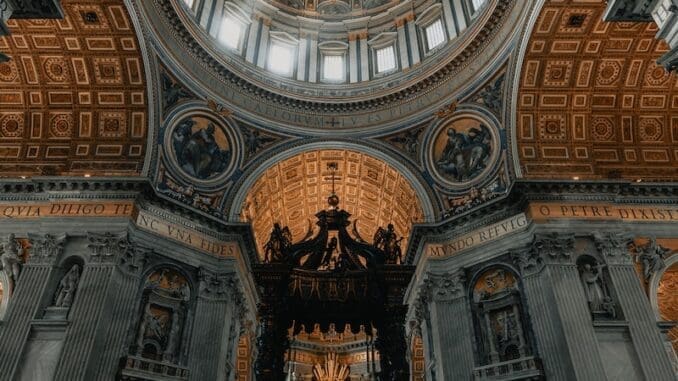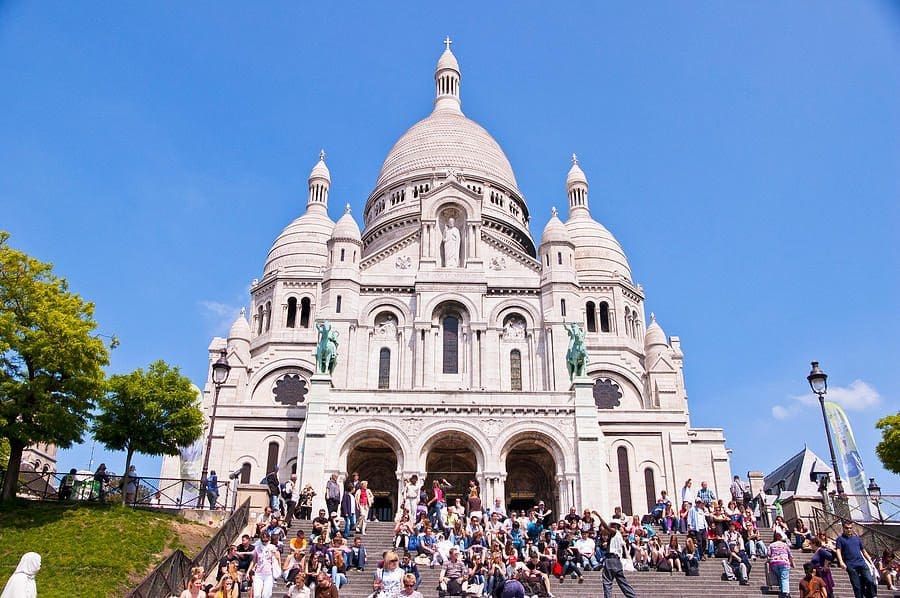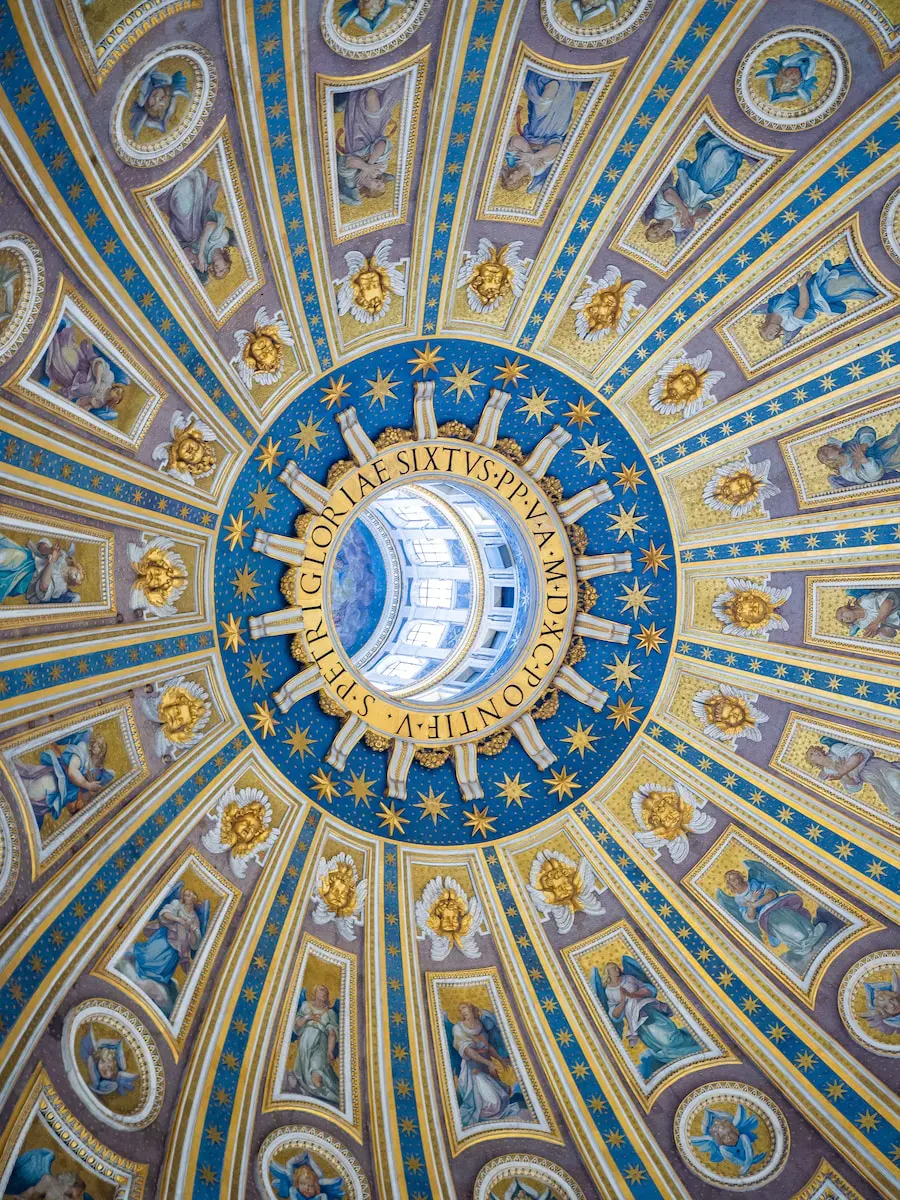
And I say also with thee, that thou art Peter, and upon this rock, I will build my church, and the gates of hell shall not prevail against it. Taken from the Gospel of Mathew; Chapter 16; verse 18.
Center of the universe

The facade of St Peter’s Basilica
For Catholics; the Vatican is located at the center of the earth and the entire universe encircles around St Peter’s Basilica! Because it is that holy and pure; the burial of St Peter- the foremost of the twelve Apostles of Jesus – the rock on which Christendom was built. The place from where Papa addresses the world, is an architectural marvel that dominates the skycaps of Rome -the holy city. Moreover, the soul that rests beneath is nothing less than a rock on which the greatest establishment in the world is built.
St Peter
His original name was Simon and was a fisherman in the village of Capernaum. Simon was handpicked by Jesus as his first disciple who named him Peter (meaning rock –foundation for Christendom). The gospels have it that Peter was the first among the twelve apostles of Christ who came to Rome and roamed all over the areas preaching gospels and finally he met with martyrdom (he was crucified head down). St Peter was buried in a heathen graveyard where Constantine’s church where St Peter’s Basilica was built. St Peter was the first bishop of Rome and hence the first Pope.
Vatican
Even before the origin of Christianity the Vatican had its holy status as the Temple of Cybele (Greek Mother-Goddess associated with Demeter) was located. These hills were so holy that people were not allowed to reside there. The present Vatican is the smallest independent state in the world both in the population (800) and area (108.7 acres); a micronation within the City of Rome. It is ruled by none other than the Pope and all administrative posts held by clergy (an Ecclesiastical Monarchy). It is the spiritual capital of the 800 million Catholics who live around the world.
St Peter’s Square
If St Peter’s is mind-boggling in appearance a square situated in its immediate east also should be of equally of stunning proportions; Piazza San Pietro or St Peter’s Square; designed by Bernini is nothing less. It was constructed between 1656 and 1667; a master artist being engaged to build a square reveals what this square is. One of the two fountains in the square is designed by Bernini himself while the other is by Maderno (architect of Maderno’s facade). In the center of the square stands the tall obelisk belonging to 13th century BC brought from Egypt in the 1st century AD. The grand Colonnade that stands guard also was designed by Bernini. It is the colonnade that makes St Peter’s
Square far more than a ‘square’; has on its top an array of 140 statues of saints standing in a row.
Basilicas

Interior of St. Peter’s Basilica by Giovanni Paolo Panini
A basilica is a large and very important church with certain ceremonial rights awarded by the pope; the title of the basilica is an approval of architectural and ecclesiastical majesty. There are four basilicas in Rome namely; the basilica of St John Lateran, Santa Maria Maggiore, and the biggest St Peter’s. Being the residence of the Pope; St John Lateran is considered holier but St Peters excels in size and majesty.
The Old St Peter’s Basilica was built by Emperor Constantine (326 – 333) and was located in the same site. It was a typical basilical structure built in the Latin cross pattern much smaller one. It became dilapidated due to age and negligence necessitating a fresh basilica that would be fit to state the power of the Holy See (canon law of the Catholic Church).
The idea and time
The idea of a grand new basilica remained in the minds of Christians for years. Pope Nicholas V set the ball rolling by bringing 2522 cartloads of stones from the Coliseum and dumped it near the site. Pope Julius II in 1505 went a step further he decided to demolish the old church and build a new one. Designs for a grand new basilica were invited on competitive basis; response was tremendous numerous designs received of which Bram ante’s was accepted; the other ones are kept at the Uffizi Gallery Florence. In 1506 foundation stone was laid for the basilica; but its progress was rather slow.
Bernini’s “Cathedra Petri” and “Gloria”
All architectural brains
Bram ante’s design was basically akin to a gigantic Greek cross with an enormous dome inspired by Pantheon of Greece. With the death of Pope Julius Bram ante was got replaced by a team of three; Giuiliano Sangallo, Raphael (who died at the age of 37) and Fra Giocondo. Works dragged on and three architects died leaving Peruzi to manage and Peruzi died leaving the charge of works to Antonio Sangallo the nephew of earlier Sangallo.
The master cometh
January 1st 1547 was marked by the arrival of Michelangelo as Capo maestro of the project; he took charge on the insistence of Pope Paul III rather reluctantly. From that day the project got its wings and it was set to fly. Michelangelo did not dismiss the numerous plans and designs he inherited from the masters in the field but just compiled it and made some masterly alternations. As per Dame Helen Louis Gardner (English literary critic and winner of ‘Dame Commander’ –The Most Excellent Order of the British Empire) has said “without destroying the centralizing features of Bram ante’s original plan; Michelangelo with a few strokes of his pen converted its snow flake complexity in to massive cohesive unity”
Michelangelo (1475 – 1564)
Michelangelo di Lodovico Buonarotti Simon was born in March 6, 1475 in Caprese near Tuscany. Like Davinci; he became a master of all arts and science (sculpture, painting, architecture, literature, poetry, human-anatomy etc). His mother’s ill health forced the family to entrust his upkeep to another family who were quarry owners. Young Michael turned to art against the wish of his father and got trained by Domenico Ghirlandalo. ‘Madonna of Steps’ and ‘Battle of the Centaurs’ are his teen age works. ‘Pieta’ (marble statue of Jesus in the lap of mother Mary; sculpted in marble; kept in St Peter’s basilica; this bears the signature of Michelangelo) and ‘David’ (nude of the young Israelite King David kept in the museum of Florence) are his masterpieces.
120 years
The work of St Peter’s basilica started on 1506 and ended on 1626; the present church has an extended nave (under Carlo Maderno and Swiss born Italian architect known as the father of Baroque architecture; it was Maderno who designed Santa Susanna’s facade) it occupies an are of 5.7 acres and can accommodate 60,000 people.
Following the tradition of St Peter numerous popes have been buried beneath this basilica. In its apse (large semicircular recess of the church) is located a monument of Bernini (Gian Lorenzo Bernini a painter/sculptor/architect; and the chair of St Peter.
The completion of the dome
Michelangelo did not live long enough to see the completion of the dome of St Peter’s basilica, after his death (Feb 1564) Giocomo della Porta and Fontana took over the charge and did the major finishing works of the dome in 1590 (the last year of the reign of Sixtus V, but Gregory XIV could see the completion of a mega work that took about a century to complete and had the inscriptions made around its inner opening in honor of Sixtus V.
Reliquae Maggiori
Maderna’s nave, looking towards the chancel
Source: Flickr
The gigantic dome built by Michelangelo (it remains as his masterpiece) is the heart of St Peter’s Basilica; it is 448 feet high (in that aspect it is the tallest in the world) and 136 feet diameter supported by four huge piers.
Each pier has a large niche in which statue of a saint is carved and contains one of the ‘Four Major Relics’ related with the life of Jesus.
1, In the northwest pier there stands St Helena holding the ‘True-Cross’ found by her from Jerusalem.
2, In the northeast there stands St Longinus; a former soldier who pierced his spear between the ribs of Jesus; who later repented and got converted here the relic is the spear.
3, The southeastern pier has St Andrews holding a diagonal cross on which he was crucified; the relic here is the ‘Head of St Andrews’ himself; which was kept in Greek Orthodox Church; had reached St Peter’s in 1964.
4, the fourth relic is in the southwestern pier is the ‘veil of Veronica’ which is held by St Veronica; the veil was used by Jesus to wipe his face while on his way to Calvary.
The Cross
The cross that is placed on this extraordinary dome is no ordinary one; on one of its arm is placed the relics of the ‘True Cross’ (on which Jesus Christ was crucified) and the relics of St Andrews (Christian Apostle and younger brother of St Peter); on the other arm contain the medallion of the Holy Lamb (a gift given by Emperor Constantine to St Peter’s Basilica that included tow gold vessels decorated by 250 pearls). Clement III got the cross raised to the top of the dome amidst the bells of surrounding churches kept ringing.
Maderno’s facade
The facade designed by Maderno is also appeals to one reaching the basilica; it is 149.5 feet high and 376 feet high made of travertine stone. Giant columns surrounding a central pediment rising in front of an attic that has statues of Jesus, John the Baptist, and the eleven apostles. It has been made in rather haste and bears the shortcomings of a hasty construction.
For a tourist/ pilgrim
The altar with Bernini’s baldacchino
Source: Flickr
St Peter’s Basilica is the focal point of numerous monuments located in Vatican and its surroundings. With a history extending several millennia, and being the center stage for the great events that took place during renaissance; this place has much to offer to the tourists. For the pilgrims there is no such place with so many things belonging to Christianity. Where else in the world the art works of super sculptors Da Vinci, Michelangelo Raphael, Bernini etc live here through their numerous works.
If one has a journey intended to pilgrimage; come to Vatican even seeing these wonderful works will be a great education for a lifetime.

Be the first to comment